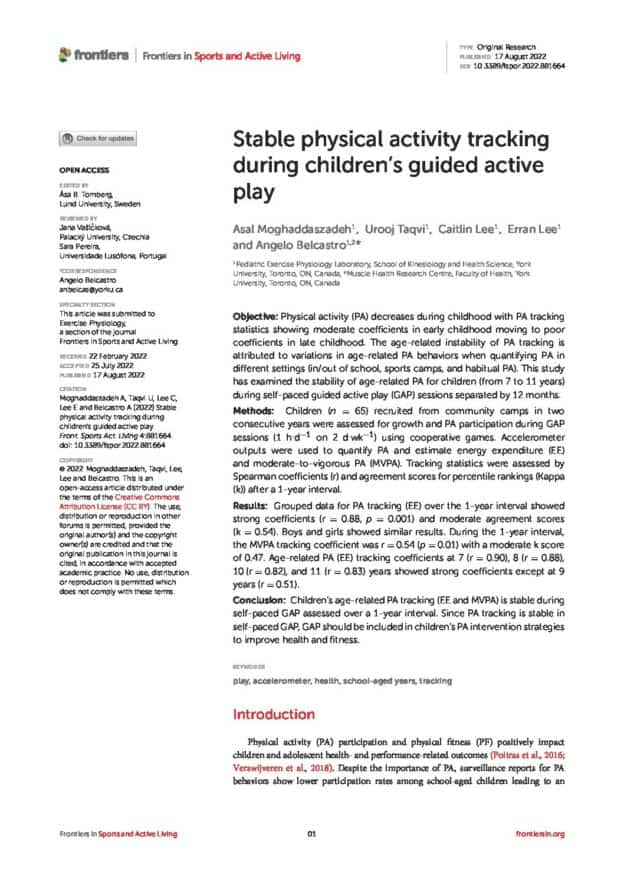Abstract
Objective: Physical activity (PA) decreases during childhood with PA tracking statistics showing moderate coefficients in early childhood moving to poor coefficients in late childhood. The age-related instability of PA tracking is attributed to variations in age-related PA behaviours when quantifying PA in different settings (in/out of school, sports camps, and habitual PA). This study has examined the stability of age-related PA for children (from 7 to 11 years) during self-paced guided active play (GAP) sessions separated by 12 months.
Methods: Children (n = 65) recruited from community camps in two consecutive years were assessed for growth and PA participation during GAP sessions (1 h.d−1 on 2 d.wk−1) using cooperative games. Accelerometer outputs were used to quantify PA and estimate energy expenditure (EE) and moderate-to-vigorous PA (MVPA). Tracking statistics were assessed by Spearman coefficients (r) and agreement scores for percentile rankings (Kappa (k)) after a 1-year interval.
Results: Grouped data for PA tracking (EE) over the 1-year interval showed strong coefficients (r = 0.88, p = 0.001) and moderate agreement scores (k = 0.54). Boys and girls showed similar results. During the 1-year interval, the MVPA tracking coefficient was r = 0.54 (p = 0.01) with a moderate k score of 0.47. Age-related PA (EE) tracking coefficients at 7 (r = 0.90), 8 (r = 0.88), 10 (r = 0.82), and 11 (r = 0.83) years showed strong coefficients except at 9 years (r = 0.51).
Conclusion: Children’s age-related PA tracking (EE and MVPA) is stable during self-paced GAP assessed over a 1-year interval. Since PA tracking is stable in self-paced GAP, GAP should be included in children’s PA intervention strategies to improve health and fitness.



Responses